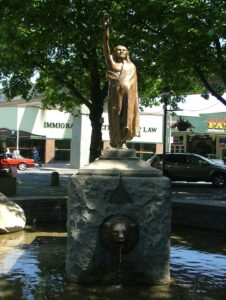Recently, I saved two people in Seattle from death or serious injury. The more interesting issue to me is why I had to.
Returning home on a Saturday afternoon after refereeing youth soccer, I was cutting through downtown Seattle. Driving north in Belltown in the right lane on Western Avenue, I stopped behind a small truck that itself had stopped at what I call a conditional stop sign, which requires a halt only if pedestrians are waiting to cross. I could see a 30-something couple stepping off the east curb into the marked crosswalk and, eyes forward, striding briskly across the street.
But in my driver-side rear-view mirror I saw a vehicle racing up from behind me in the lane to my left, not slowing down at all. I immediately grasped that car wasn’t going to stop in time, if at all. The couple crossing the street had disappeared in front of the truck in front of me, meaning they would emerge in the left lane just in time to get hit and killed or at the least badly hurt.
So I did the only thing I could. I leaned on my horn and held it. Although I was a car back, the long, loud obnoxious blast had the desired effect. The startled couple paused. The offending car whizzed past us all on the left, running the soft stop but hitting no one. I single-handedly freed up two gurneys in the emergency room at Harborview Medical Center.
But the incident got me to thinking about other near-misses I’ve seen involving vehicles and pedestrians trying to get across streets. By personal observation, of all the places I’ve lived or worked before becoming New To Seattle–and that’s a bunch–Seattle takes the cake when it comes to persons crossing streets on foot with so little seeming regard for their personal safety. I’m thinking that some of this apparently blithe attitude has political roots. Continue reading
Share on Facebook




















